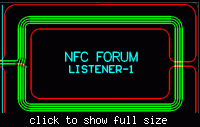robotnik
Newbie level 3
- Joined
- Feb 10, 2012
- Messages
- 3
- Helped
- 0
- Reputation
- 0
- Reaction score
- 0
- Trophy points
- 1,281
- Location
- Somerset, UK
- Activity points
- 1,311
Hi all,
please be kind this is my first post, I hope I am in the right place etc. etc.
So I am building an RFID reader which will need to be able to read accurately and consistently at 50 -70 cm distance. I am currently using the atmel u2270b base station IC
and have successfully read and decoded the 128 bit biphase signal returned by my tags.
Nothing in the data sheet says anything about going above about 20 cm, but I appears to be possible to read at greater distances than this as I have seen hardware doing it (not with u2270b).
I am currently thinking of amplifying the antenna driver signal to increase the field strength, but am unsure of likelihood of success, or whether this is a stupid idea.
Does anyone have any ideas about how I could get this done. i.e other ICs, discrete components or any other advice.
thank you.
p.s before you tell me to use a higher frequency RFID system, I cannot, this must be done with LF (134khz) magnetic induction type passive RFID.
please be kind this is my first post, I hope I am in the right place etc. etc.
So I am building an RFID reader which will need to be able to read accurately and consistently at 50 -70 cm distance. I am currently using the atmel u2270b base station IC
and have successfully read and decoded the 128 bit biphase signal returned by my tags.
Nothing in the data sheet says anything about going above about 20 cm, but I appears to be possible to read at greater distances than this as I have seen hardware doing it (not with u2270b).
I am currently thinking of amplifying the antenna driver signal to increase the field strength, but am unsure of likelihood of success, or whether this is a stupid idea.
Does anyone have any ideas about how I could get this done. i.e other ICs, discrete components or any other advice.
thank you.
p.s before you tell me to use a higher frequency RFID system, I cannot, this must be done with LF (134khz) magnetic induction type passive RFID.
